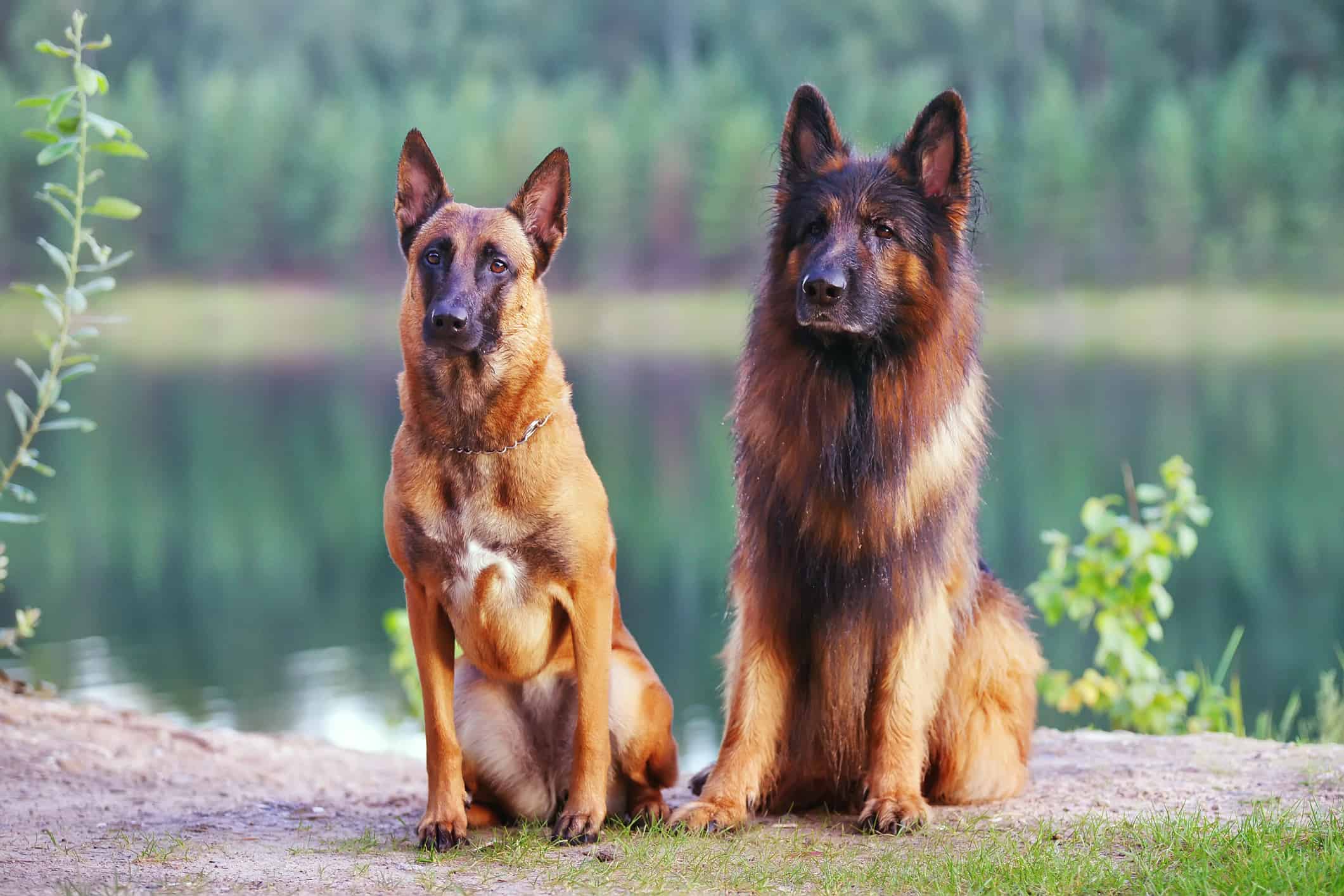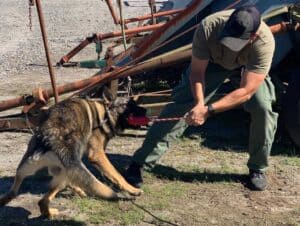The German Shepherd and the Belgian Malinois are two breeds which lead the way in Police K-9 work. These breeds uphold various duties to help law enforcement, including detecting narcotics, patrol work and scent tracking.
German Shepherds and Belgian Malinois share many similarities, from appearance to personality. These likenesses, however, come with some critical differences that can make one breed more suitable for a police unit than the other.
This article will cover the similarities and differences between the two. Read on to learn everything about their early history of these breeds, their physical characteristics, and their temperaments.
History of each breed
Of course, the origin of each breed is contained within their name – the Belgian Malinois comes from Belgium, and the German Shepherd heralds from Germany, but there is more to their history than just their country of origin.
Origins of the German Shepherd
In the 19th Century, there were many sheep herding dogs in Germany, but their abilities and appearance varied significantly. The breeders formed the Phylax Society and attempted to standardize German sheepherding dogs. However, it was dissolved due to internal conflicts after only three years.
Max von Stephanitz, an ex-member of the Phylax Society, purchased a German sheep herding dog named Hektor Linksrhein, which met his description of what a working dog should be. After changing the dog’s name to Horand von Grafrath, Stephanitz founded the Society for German Shepherd Dogs. Horand is the first dog added to the society’s breed register and is the genetic basis for the modern German Shepherd.
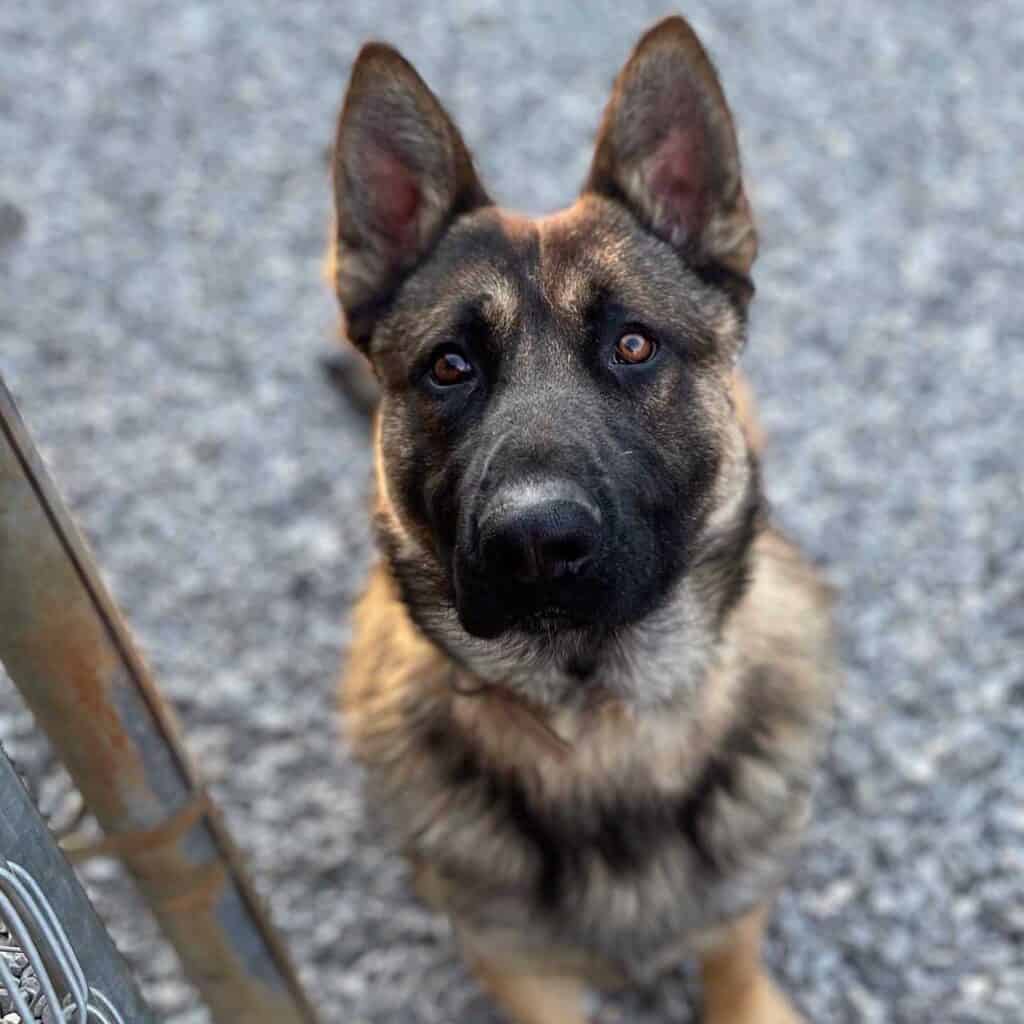
The first German Shepherds came to the United States in 1907 and were well received by the people. The breed became increasingly popular over the years despite demonizing the breed due to Germany’s involvement in the first World War. In the 1970s, German Shepherds, with other similar breeds, were trained for patrol work. Since then, the breed has been utilized for police and military work, upholding countless responsibilities.
Origins of the Belgian Malinois
While the German Shepherd is a distinct dog breed, Belgian Malinois is one of the four types of Belgian herding dogs. The Belgian Malinois separates itself from the other three sheepherding dogs – Groenendael, Laekenois, and Tervuren – with its short hair and active and alert temperament. The Malinois is believed to be the first Belgian sheepherding dog. In fact, the other varieties were commonly called “other-than-Malinois.”
The Belgian Malinois was first introduced to the United States in 1911 when the NYC Police Department employed five Belgian sheepherding dogs as police K9s. The AKC recognized the breed in 1959, and by the mid-1960s, the Belgian Malinois became a highly favored breed for police work.
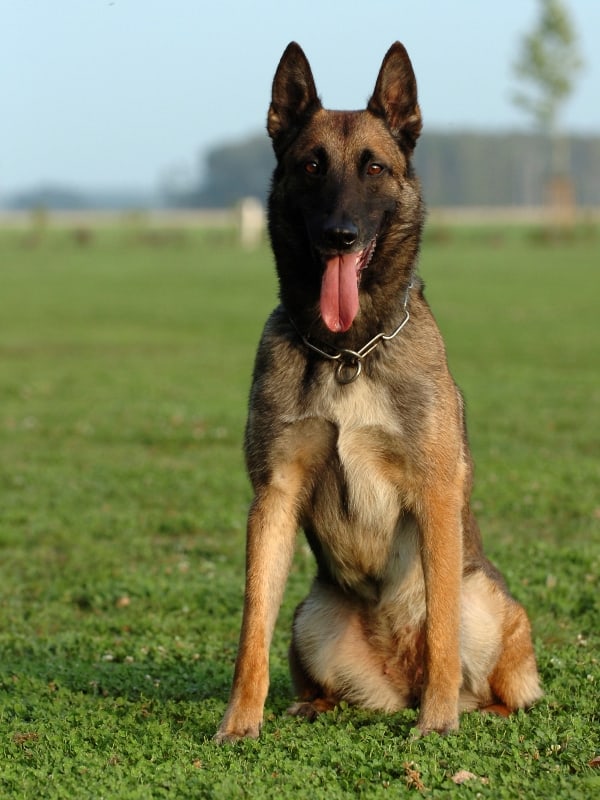
Nowadays, German Shepherds and Belgian Malinois are typical breeds for police departments. However, it is worth noting that an increasing number of Belgian Malinois are replacing retired German Shepherds.
Physical characteristics
Typically, German Shepherds and Belgian Malinois are similar in size, both standing at 22 to 26 inches tall. The Belgian Malinois weighs between 40 and 80 lbs, while the average weight for German Shepherds is slightly more at 50 to 90 lbs. The Malinois has a more athletic, agile build, whereas the German Shepherd is stocky and muscular.
The Belgian Malinois has a short, dense double coat, and the German Shepherd has a thick double coat with more fur. Both breeds adapt to different climates easily, and harsh winters are not a problem. The German Shepherd’s hair is longer, requiring brushing three to four times a week. Brushing Mals, on the other hand, is no more frequent than a weekly occurrence.
The resemblance in their coloring and similar size is why many confuse these two breeds. Still, creating a distinction between the two is not that difficult. German Shepherds have more colors in their bodies than Mals. They are usually black and tan or black and silver, with a dark saddle covering their body. There are also German Shepherds with a coat light at the root and dark at the tip, known as the sable color German Shepherd.
Mals have a lighter, solid color with a short coat that is fawn in color and a distinct black mask and ears. Unlike the German Shepherd, Belgian Malinois does not have many color variations. Lastly, the Belgian Malinois has an angled tail and triangular ears. The German Shepherd has a puffy tail with pointy ears.
Temperament and personality
Both the German Shepherd and Belgian Malinois are working dogs that need to have a purpose. They are intelligent, obedient to their handlers, hard-working, and have plenty of energy.
German Shepherds are loyal, obedient, confident, and watchful dogs. They keep their cool in stressful situations and focus on the given task. Like other working dogs, they desire to please their owners but sometimes show independent traits.
This is not to say that they do well without their owners or handlers. Although they might wander off somewhere or stay locked to something that catches their attention, they depend on human companionship.
These traits also apply to the Belgian Malinois, added with having more drive. Belgian Malinois is much more energetic, alert, and always ready to change directions if something catches their attention, like prey. Early training is important for Belgian Malinois to prevent stubbornness towards unwanted behaviors.
Overall, both breeds are intelligent, obedient, confident, loyal, and easy to train. The primary difference in temperament is the Mals having more drive. This also means they need a more vigorous exercise routine. This is to say that German Shepherds enjoy snoozing half the day away on the couch, but a typical GSD may struggle to keep up with an average Mal.
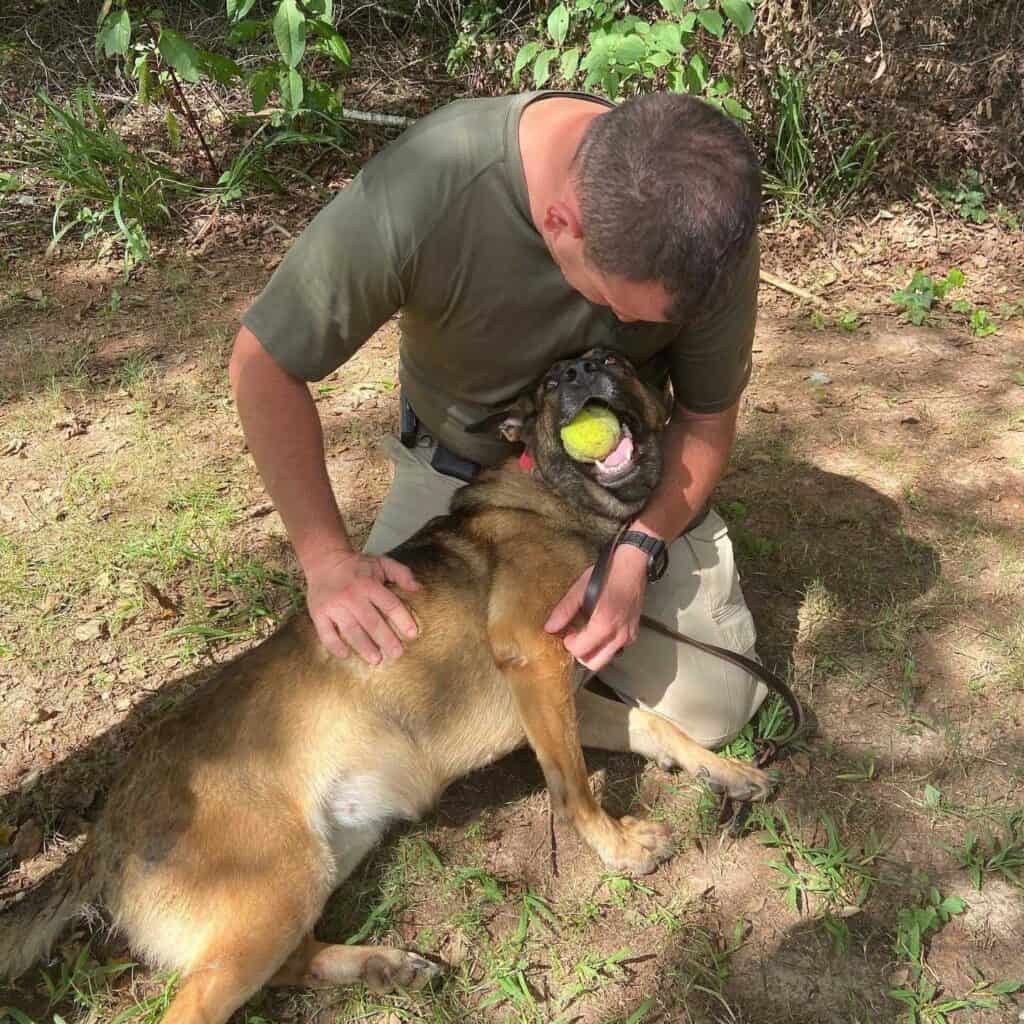
Why do both breeds succeed as police dogs?
Obedience to their handlers and confidence in themselves are the top reasons why both breeds are a good choice for police work. They are easy to train, listen to their owners at all times, and are adaptable enough to uphold various duties. These make the German Shepherd and the Belgian Malinois among the best candidates for police dogs.
While the German Shepherd has traditionally been the most popular dog breed for law enforcement, the Belgian Malinois is catching up. The natural aggression and energy of the Mals, and being a generally healthier, longer-living breed, make more and more police departments choose them over German Shepherds.
This, however, should not be taken as forgetting about the German Shepherd altogether. It is still one of the best breeds for police work, and remains one of the most popular.
Overall, both the Belgian Malinois and German Shepherd excel as police dogs. The former has more drive, making it more appropriate for fast-paced working environments. Behavioral problems can occur if this drive is not utilized with adequate exercise. If the trainer or the handler is anxious about the demanding nature of handling a Belgian Malinois, the German Shepherd may be a better choice for the department.

